How does copyright fail a culture? This question anchored one of the most thought-provoking experiences of our time in Luang Prabang, thanks to an exhibition at the Traditional Arts and Ethnology Centre (TAEC). For anyone traveling through Laos, TAEC is a must-visit.
Laos’ Ethnic Cultures
Laos is a landlocked nation that borders five countries1, each with their own rich history and culture. As a crossroads of Southeast Asia, it is home to an incredible diversity of ethnic groups. While many of these are influenced by neighbouring countries, others are entirely unique to Laos.
The Traditional Arts and Ethnology Centre’s (TAEC) mission is to celebrate and safeguard this diversity. Their mission statement is to “promote pride and appreciation for the cultures and knowledge of Laos’ diverse peoples, support ethnic communities to safeguard their tangible and intangible cultural heritage, and promote their sustainable livelihood development.”
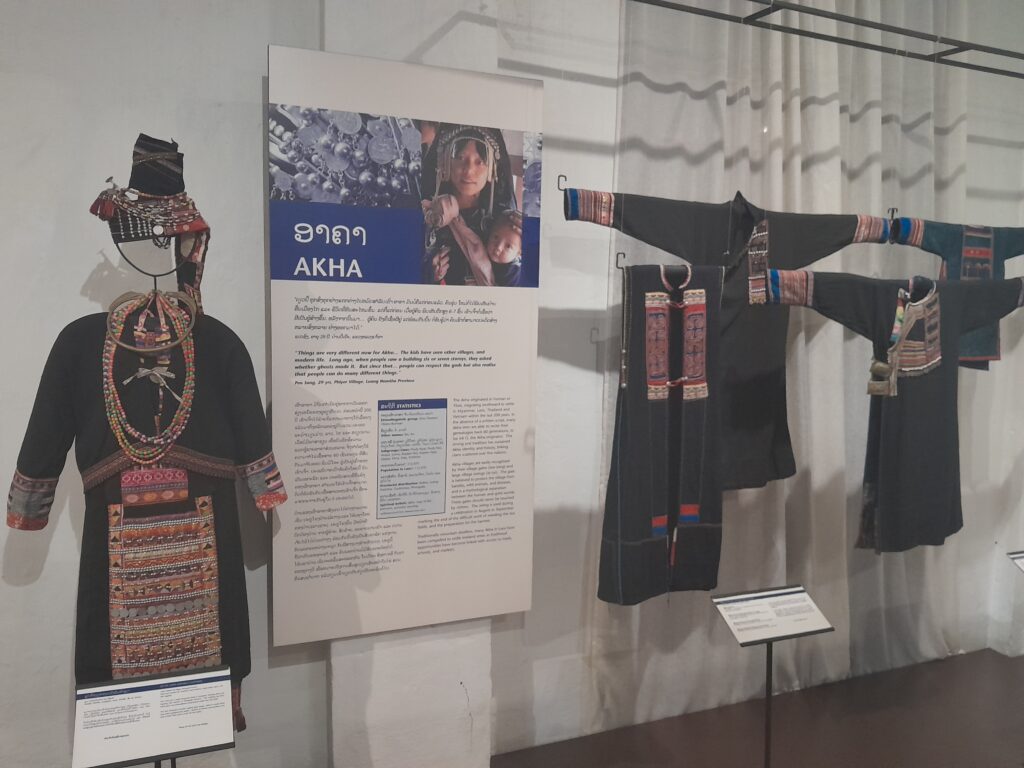
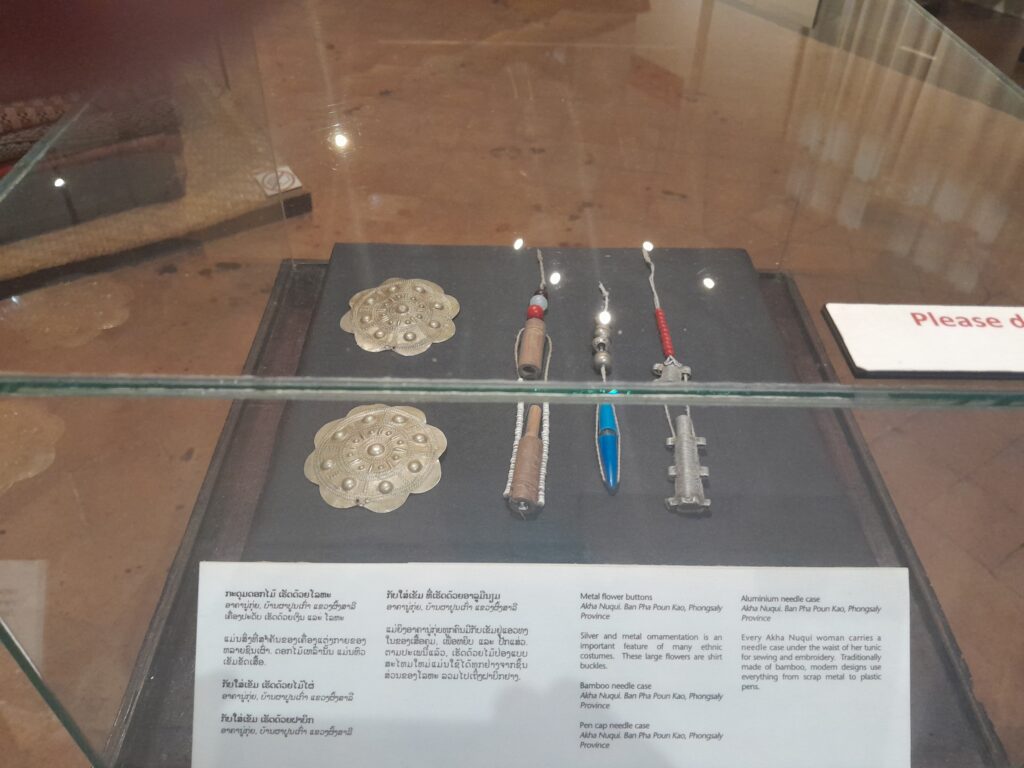
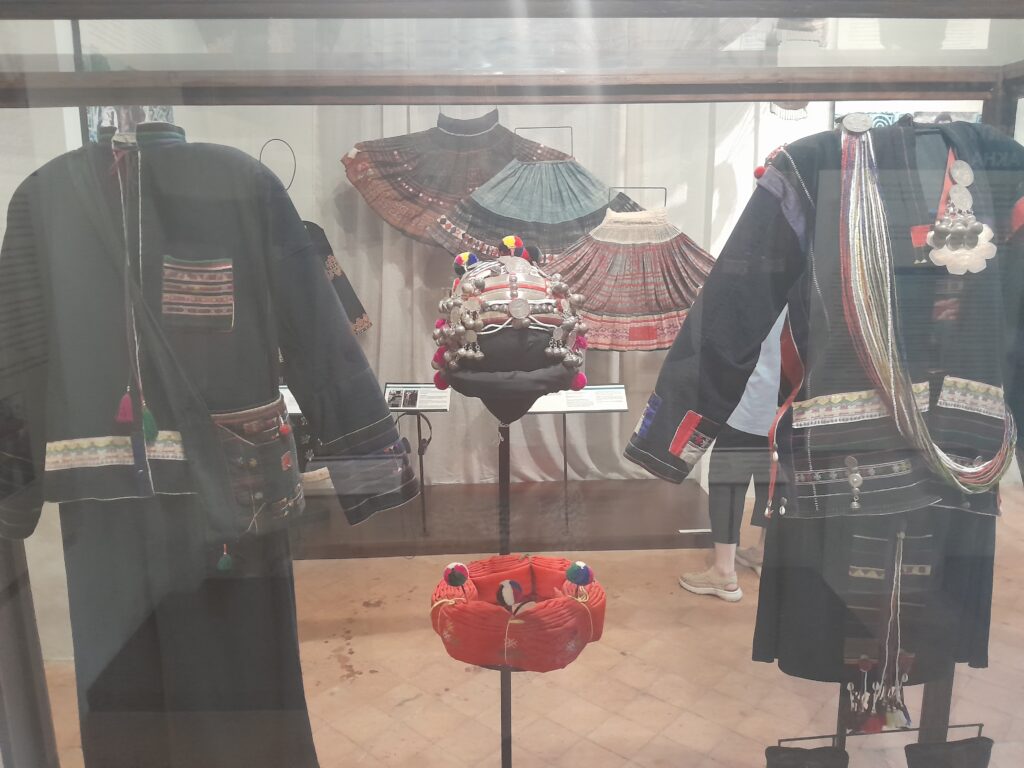
As we wanted to learn more about the culture of Laos, we set off to find TAEC, tucked away down a narrow path just off the main road in Old Town.
Inside, the exhibits were an introduction to the rich tapestry of Laos’ cultures. We marveled at the colorful, intricate Akha clothing and jewelry, each piece full of colours and patterns that created a unique identity. Nearby, there was a small display of tools, including an example of how modern plastics are repurposed in practical ways.
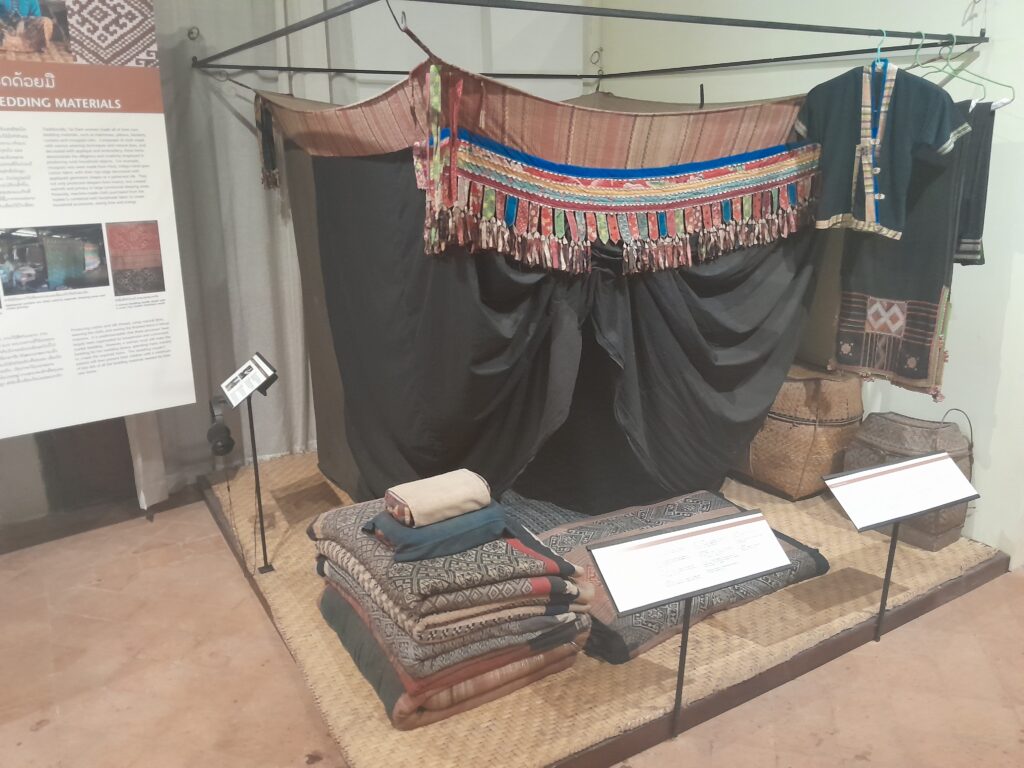
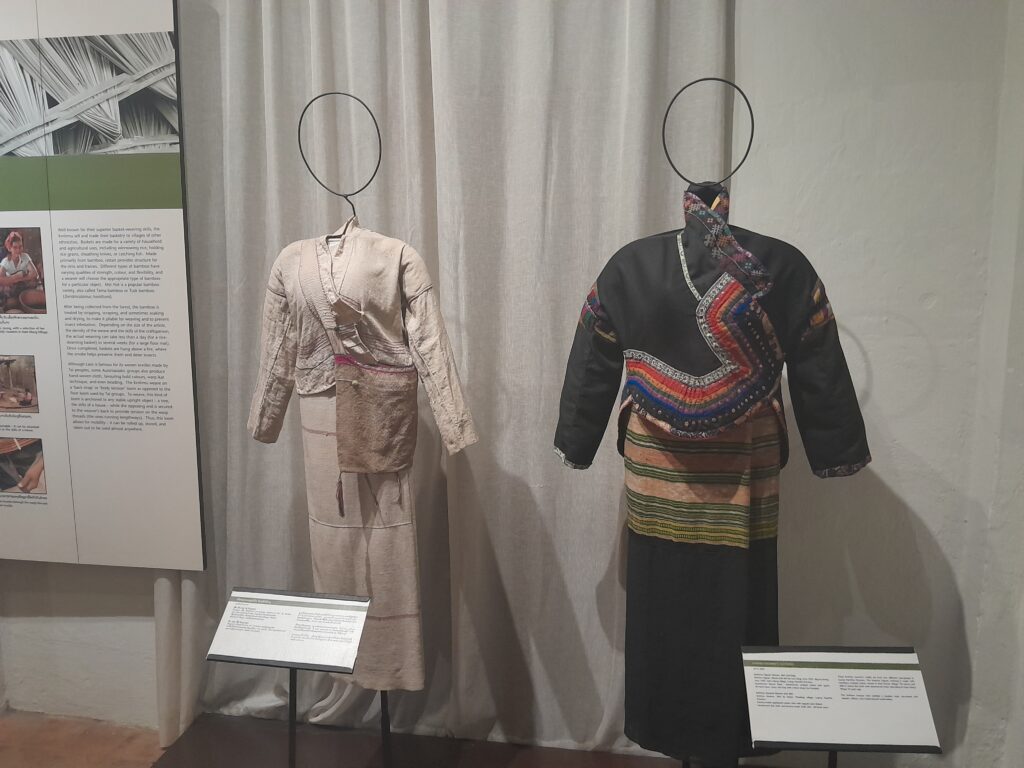
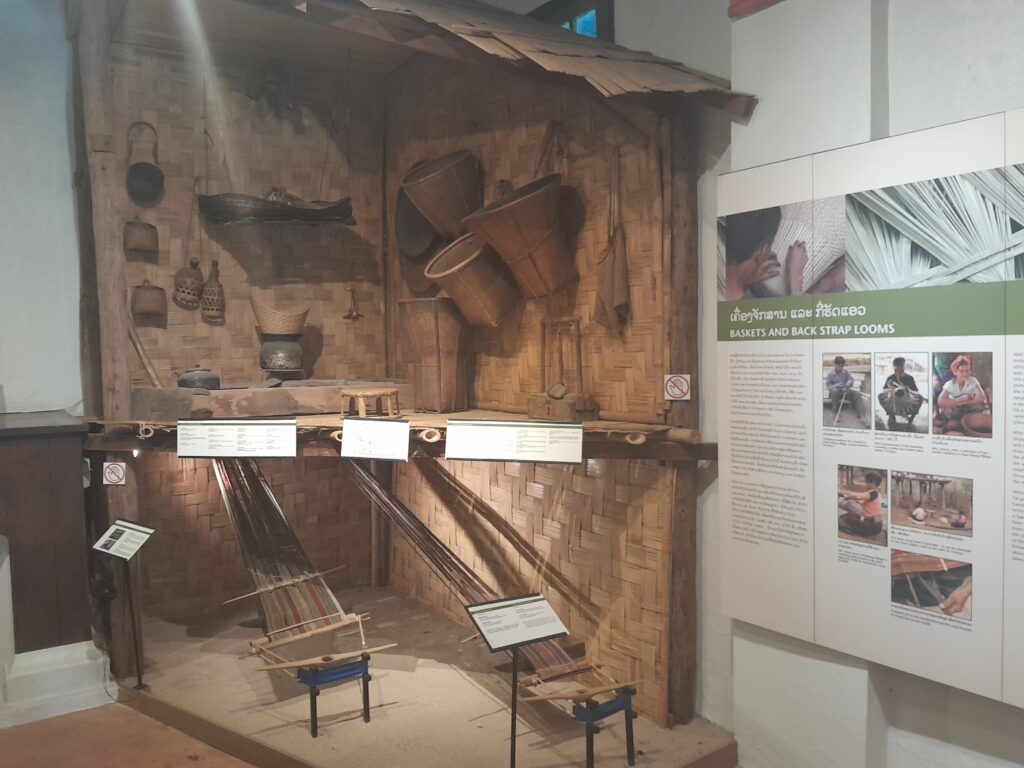
During New Year celebrations, the Hmong people don vibrant, intricately decorated costumes, examples of which are also on display. The various different types of baskets woven by the Kmhmu were equally captivating. Finally there was a demonstration of the Tai Lue people’s method of using the loom. Using relatively primitive tools, they create beautifully woven fabrics.
Though these exhibits provided only a glimpse into the diversity of Laos, they offered a window into the many differing cultures spread across the countryside.
Claiming Inspiration
While these exhibits celebrated Laos’ cultural vibrancy, the temporary exhibition, Claiming Inspiration, shone a spotlight on a darker reality. It tackled a troubling issue I’d never considered before, one that exploits not only the indigenous traditions of Laos but also of the many minority cultures worldwide.
The exhibit exposed how large fashion companies have drawn “inspiration” from traditional Laotian designs. Only there is a dark side to this inspiration. Many of these companies copy traditional dress patterns outright, claiming them as their own without crediting the communities that created them.
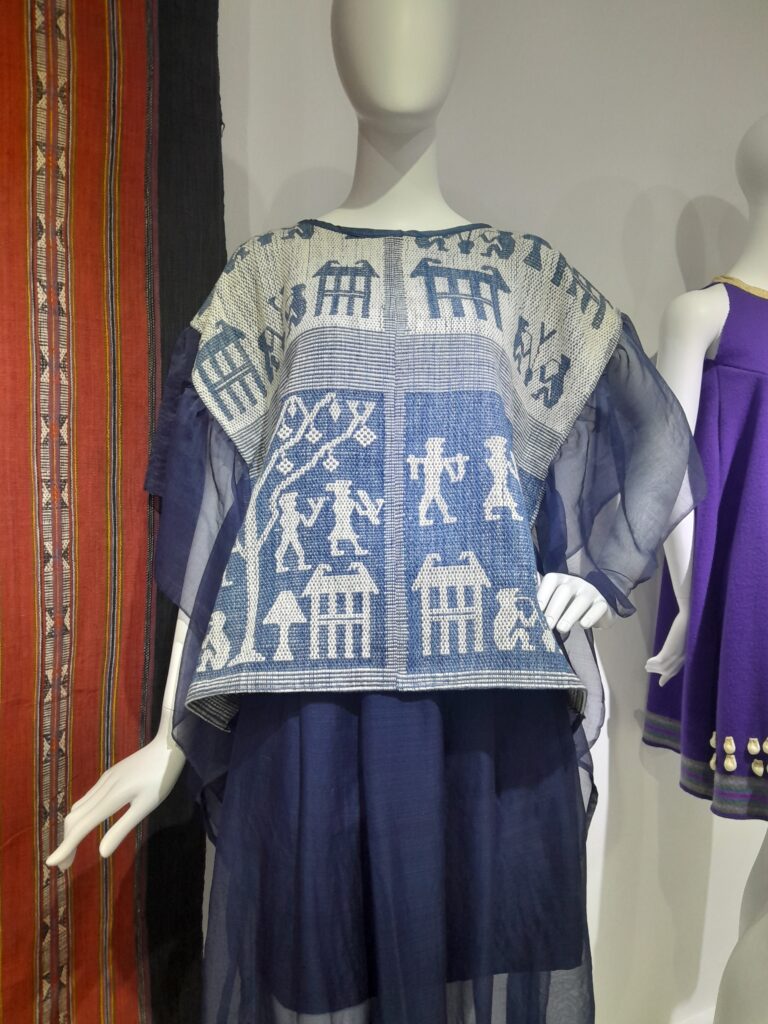
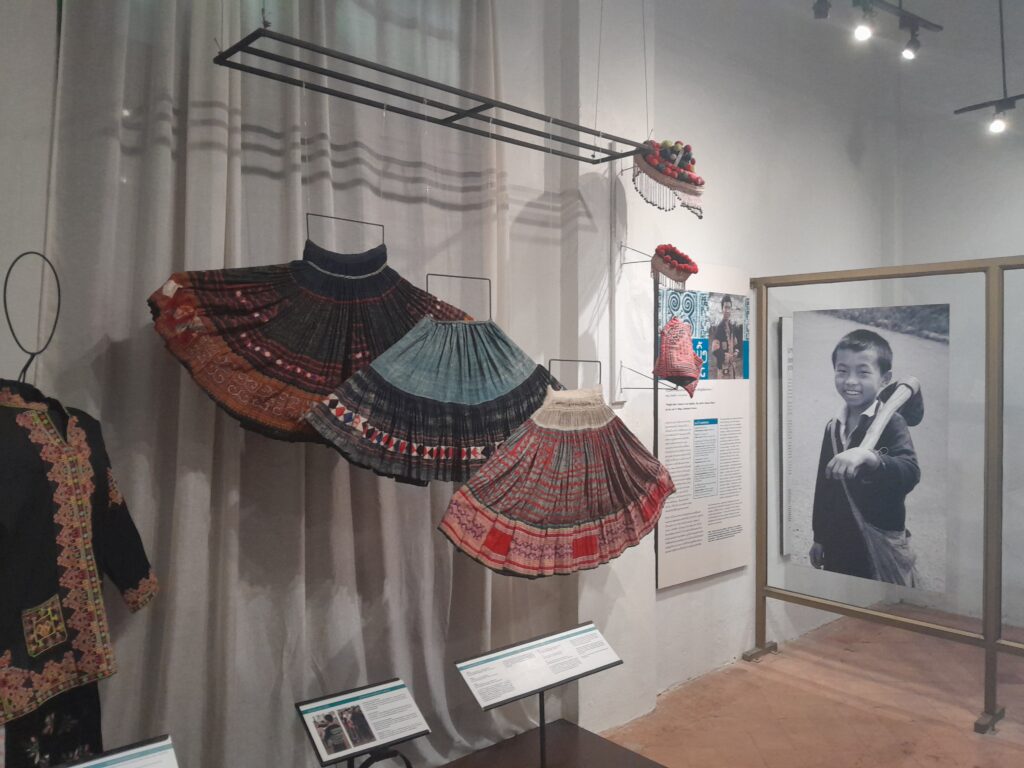
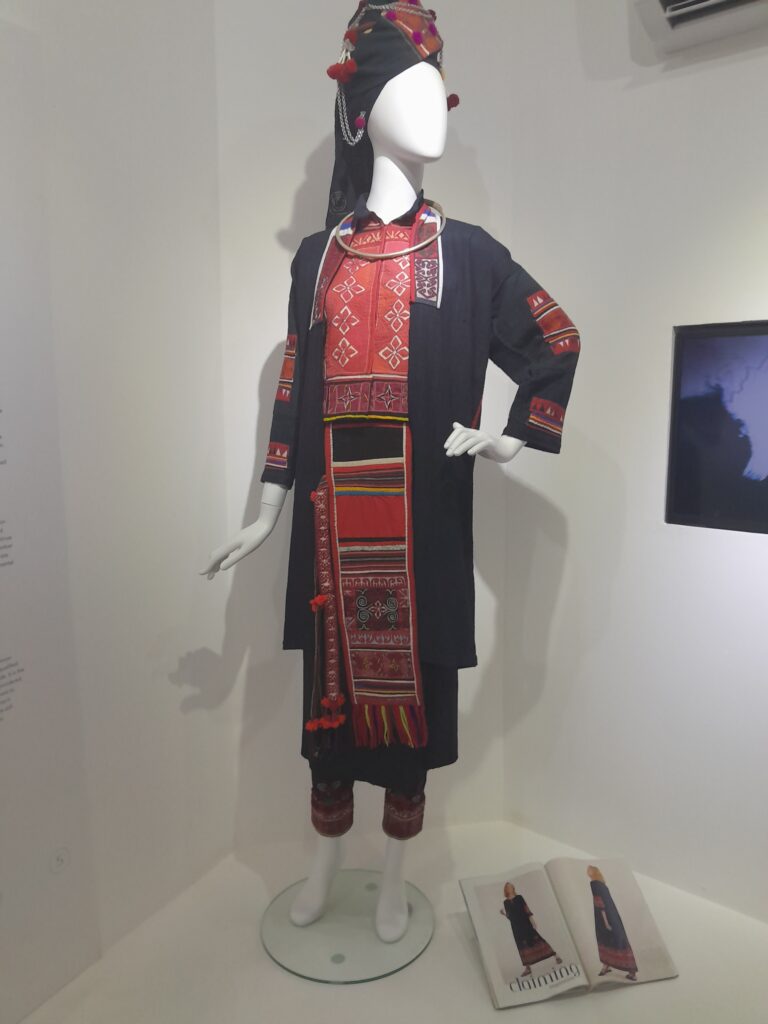
The problem lies in the way copyright laws are written. In most countries, copyright applies to individuals or corporation. But what about designs that belong to entire cultures? Many traditional designs are the result of collective creativity passed down through generations. Since these designs aren’t owned by individuals, they fall outside the protection of copyright law, leaving them vulnerable to appropriation.
The Cultural Intellectual Property Rights Initiative (CIPRI), a key collaborator for the exhibit, works to address this gap. CIPRI advocates for solutions that enable collaboration between fashion companies and indigenous communities, ensuring the latter benefit from their own cultural heritage. The exhibit also showcased success stories, where such partnerships had been fostered, proving that ethical collaboration is possible.
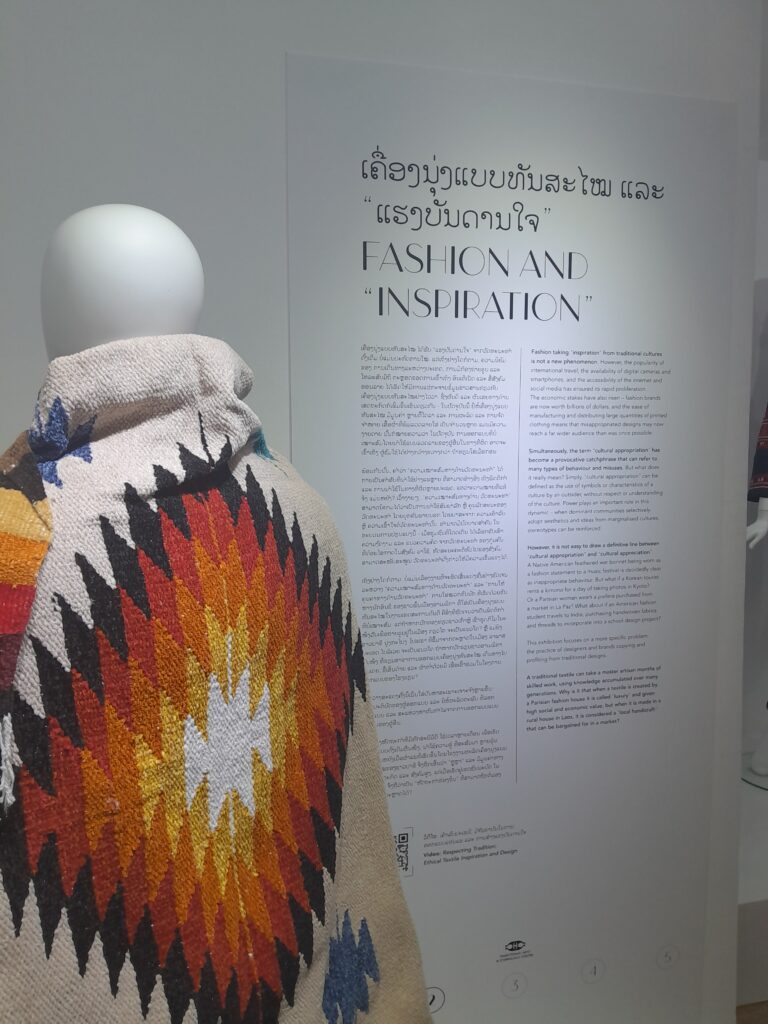
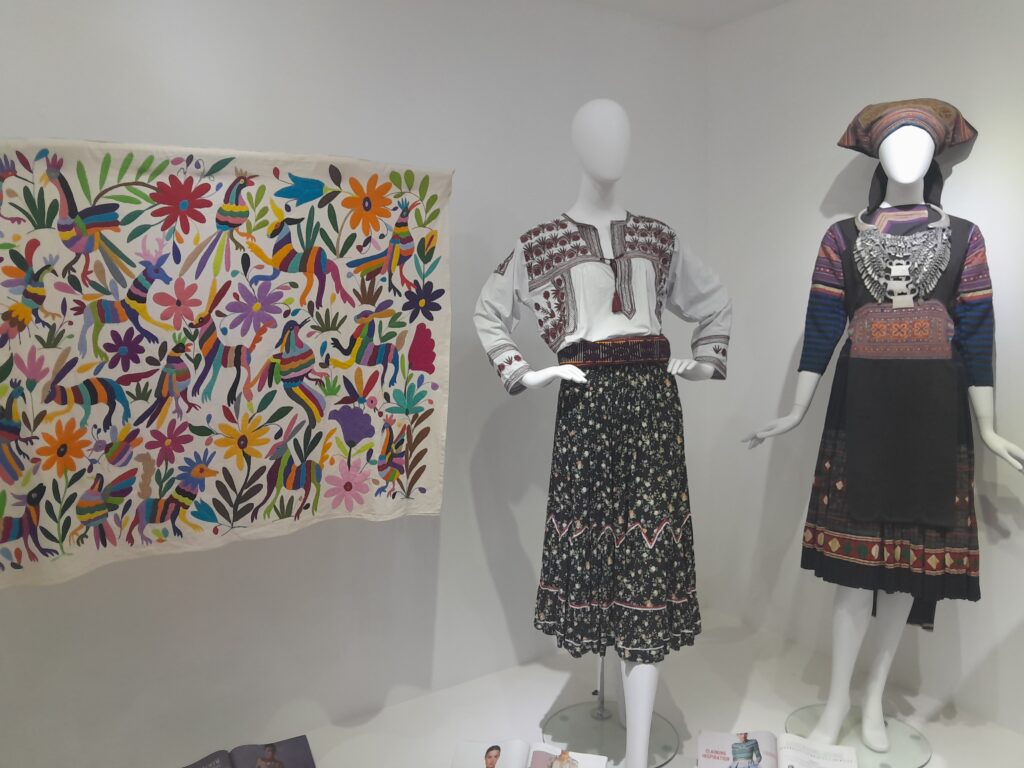
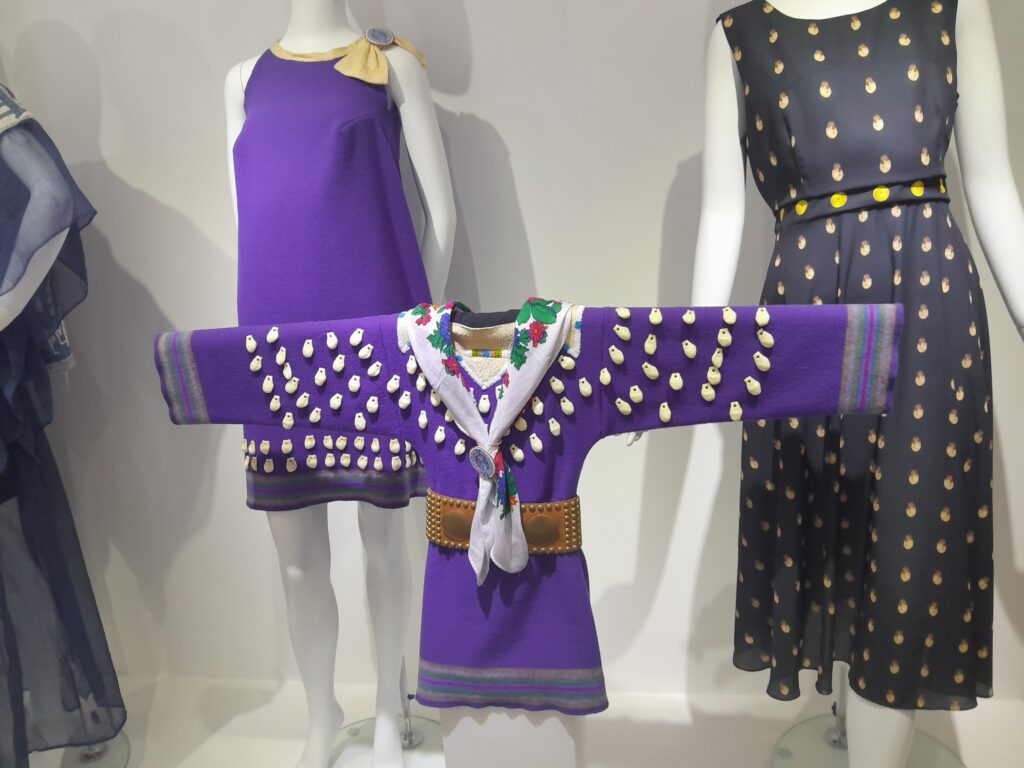
This eye-opening exhibit left me reflecting on how often the contributions of marginalized cultures are overlooked, even as their creativity fuels global industries. It’s a problem I hope gains more recognition and support in the future.
Exit Through The…
As with many museums, we left through the gift shop. It featured a wide range of handmade products from Laos’ ethnic minorities: intricate crafts, textiles, and more. There were also books that would delve deeper into the cultures and traditions we’d just learned about.
Here we also discovered that the TAEC offers workshops where visitors can learn the traditional methods used to make these products. Whether for curious children or adults seeking a hands-on experience, these workshops provide a unique opportunity to appreciate the skills and techniques developed over generations.
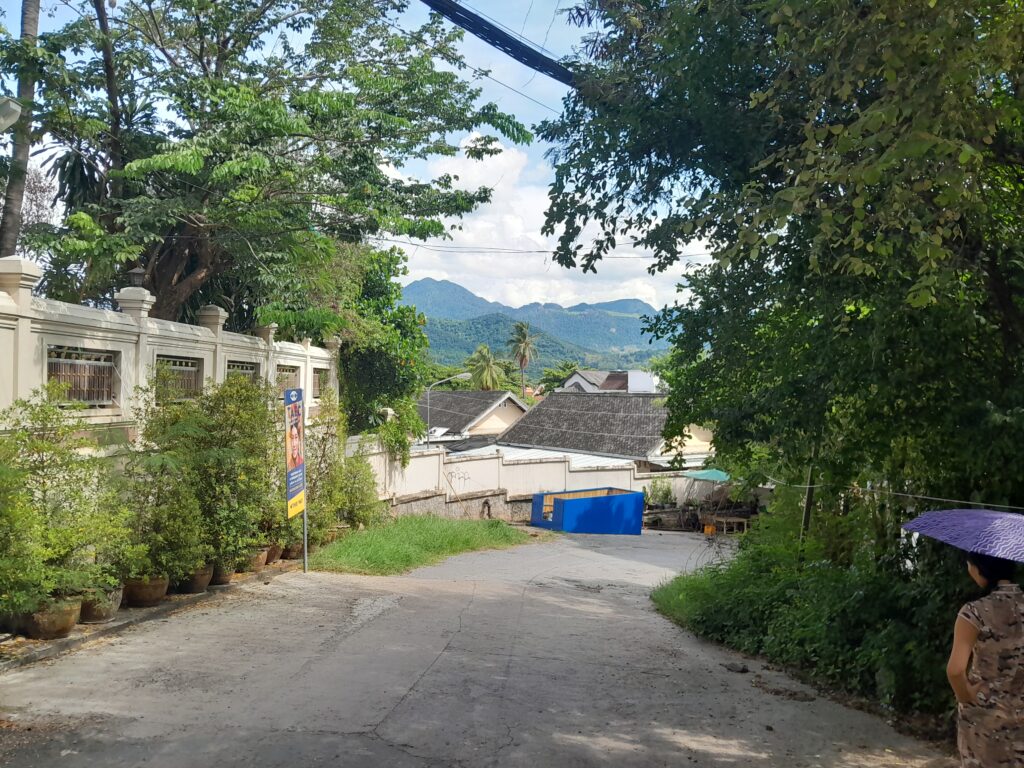
The Claiming Inspiration exhibit has stayed with me, leaving me determined to help raise awareness about these issues. While the solutions may not be immediately clear, acknowledging the problem and taking small steps, like supporting initiatives such as CIPRI or shopping responsibly, can help ensure these communities receive the recognition and benefits they deserve.
Change begins with each of us.
- Cambodia, China, Myanmar, Thailand, and Vietnam ↩︎





One thought on “Traditional Arts and Ethnology Centre”
Comments are closed.